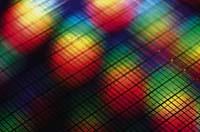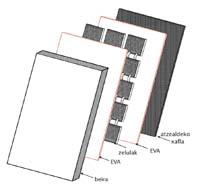Photovoltaic solar energy and nanoscience in Cidemco

The current photovoltaic market offers reliable systems. However, its cost remains uncompetitive with respect to other sources of electricity production. Therefore, it is essential to reduce in some way the cost of these systems.
In the sector of photovoltaic cells predominate cells based on crystalline silicon olatas. The basic raw material is silicon. Nature is rich in silicon and its characteristics are well characterized at a scientific level. All this has been propitiated, in large part, by the enormous development of a microelectronics industry based on silicon, which has contributed to the acquisition of a wider knowledge and experience in the matter.
In recent years, the research of photovoltaic solar energy has focused on the reduction of the consumption of silicon and on the reduction of costs in the production process of the modules, as well as on the increase of the efficiency of the systems.
The production of these cells requires a silicon without impurities, less and less present in nature. Therefore, as mentioned above, it is advisable to reduce the consumption of silicon. At the same time, the price of photovoltaic systems is increasing. The companies supplying this material to the photovoltaic industry also supply the microelectronics industry. This shortage of forecasts has generated a series of problems that will not be solved in the short term. In fact, silicon could also be used with a higher degree of impurity obtained with cheaper techniques.

Currently, these techniques are being developed and optimized. Nevertheless, for this purpose, a multitude of productive plants will be launched. Experts work on this task, but in the short term they will not be able to launch the production workshops sufficient to supply the photovoltaic industry.
On the other hand, in the production process of olatas there are a series of steps in which it can be studied the possibility of optimizing the use of silicon in a step, as well as the recycling techniques of it.
Increase efficiency
Another important factor to reduce the cost of photovoltaic systems is the increase in efficiency of cells and modules. If systems efficiency were to be increased by 1%, the cost of systems would be reduced by approximately 5% per watt (Wp).
The efficacy of crystalline silicon cells in the laboratory does not exceed 24.7%. The efficiency of commercial cells is significantly lower. Currently the efficiency of commercial photovoltaic panels ranges from 5% to 15%. These figures are improved, but that is a great effort of research. The use of innovative approaches can mean between 10% and 30% efficiency in the coming years. These panels currently cost approximately 3 euros/Wp. In the short or medium term they expect a value of 2 euros/Wp, 1 euro/Wp in the medium or long term and 0.5 euros/Wp in the long term.

In the energy efficiency area of the Cidemco technology centre, several research projects are being developed on renewable energies (solar photovoltaic, solar thermal, solar cooling and biofuels).
At present, the studies of photovoltaic solar energy in Cidemco focus on two areas: on the one hand, we want to integrate photovoltaic solar energy into construction and, on the other, we want to optimize the processes of transformation of solar energy into electricity at the atoms level. For this purpose, we use highly known theoretical and experimental techniques in the field of nanosciences and nanotechnology.
New semiconductor materials
On a theoretical level, we intend to develop new semiconductor materials through advanced computational simulation methods based on quantum physics. These new materials will have energy levels optimized to produce electricity. These materials are called intermediate band semiconductors and can be appropriate for the production of high efficiency photovoltaic cells.

These intermediate band semiconductors present an additional energy level in the structure of their energy levels --bands -. In this way, solar photons could not be used on other occasions to generate electricity. Therefore, the use of all these solar photons would increase the efficiency of the process of transforming solar energy into electrical energy, as long as material of these characteristics were found. Theoretically, the use of this type of cells would mean an efficiency of 63%.
It requires, therefore, a basic research oriented to the development of new semiconductor materials. These materials will serve as a basis for cells of greater efficiency than the current photovoltaic solar cells available in the market.
In addition, we work on the improvement of two basic products in the photovoltaic cell industry, from a more experimental point of view: the vinyl acetate copolymer (EVA), used in glass and photovoltaic panel capsules. All this in collaboration with an important company in the glass sector and the main European producer and distributor of EVA. In addition, scientific work is carried out in permanent collaboration with several universities.
In general, solar cells are structured in glass-eva-semiconductor -eva-plate posterior. In the photovoltaic panels, tempered glass is mainly used and very transparent, that is, with little iron salt. Let pass 91% of the light and has a thickness of 3 to 4 mm, structured to reflect the smallest amount of light possible and facilitate the access of light to the semiconductor material. EVA, used to encapsulate, in addition to being optically transparent, is stable at high temperatures and high doses of ultraviolet radiation.

Trying to concentrate sunlight
In addition, we want to analyze the behavior of these new systems under the influence of concentrated sunlight. Electronic transitions are very non-linear, so we consider that the use of concentrated sunlight can greatly increase the efficiency of these new systems.
To do this, we are developing a solar concentration system in Cidemco. This system will contribute to the necessary tests and will serve as a base for new projects.
The proposed approach presents a number of advantages, among which it should be noted that once the material of suitable characteristics is identified, it can be implanted in the glass that the cells have on them or incorporate directly to the semiconductor material through EVA, without altering the photovoltaic material. Technically this method is better than others like introducing defects in silicon. This can affect cell efficacy in some cases. The method can also be applied to other types of cells (CIGS, CdTe, AsGa, etc.) by reviewing the active principles.

This research process aims to increase the efficiency of current silicon photovoltaic cells by approximately 2-3%. This will have important consequences for the national and international photovoltaic industry. These results would be integrated in both glass and EVA in a simple and economical way, and thus:
It would be possible to increase the efficiency of photovoltaic systems and accelerate their amortization. The conclusions of this research project will serve as a starting point for the optimized development of glass and EVA, large-scale production and product marketing by the participating companies.






